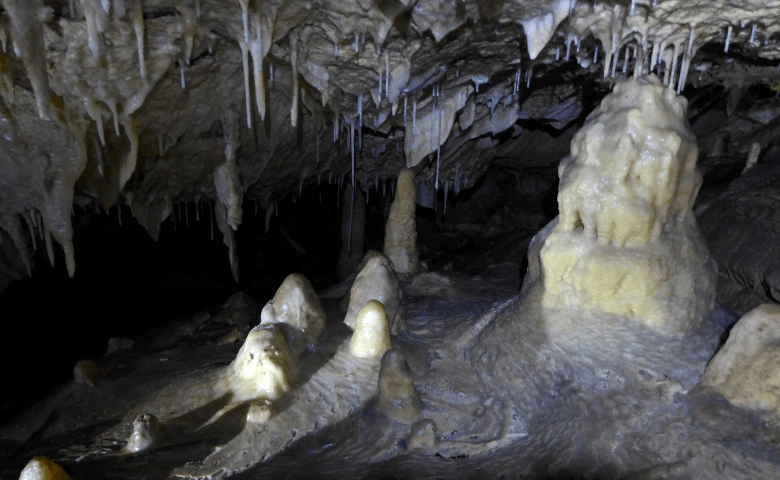The state of Meghalaya in northeastern India is considered the wettest region on earth with about 11 meters of precipitation per year. The enormous amounts of rain are mainly caused by the Indian summer monsoon, which hits the Himalayan mountains in this area from the sea and rains out. „However, if this monsoon does not occur, there will be no harvest. From historical records and chronicles it is known that there have been long-lasting droughts in recent centuries, which have repeatedly led to famines but also to political upheavals,“ explains Christoph Spötl, head of the quaternary research group at the Institute of Geology at the University of Innsbruck. Since the beginning of the instrumental measurement of meteorological data in 1871, however, such an event has not been documented. In the study now published in the journal PNAS (Proceedings of the National Academy of Sciences) with lead author Gayatri Kathayat from Xi’an Jiaotong University, the team now presents a precise reconstruction of the precipitation development of the Indian monsoon over the last 1000 years.
Stalactites as a „history book“
The data for the reconstruction of the Indian summer monsoon were provided by stalactites from the Mawmluh Cave in Meghalaya. „We use these cave deposits as a climate archive, as they store layer by layer of climate information, sometimes very far into the past, which allows us to leaf through like in a history book. In this cave we were able to find two very ‚good‘ stalagmites: They gave us a glimpse into the development of the Indian monsoon precipitation of the last millennium with a very precise resolution up to individual years,“ explains Spötl. For this purpose, the researchers determine oxygen isotope data from the cave deposits, which can be „translated“ into precipitation amounts. The results show a very dynamic picture, as Christoph Spötl explains: „Since the beginning of the recordings with measuring instruments, the monsoon has been relatively constant. If we look further into the past, however, we see that in the past millennium there were often long-lasting droughts and thus the monsoon was almost completely absent.“ The extreme events detected in the stalactites coincide strikingly with historically documented droughts, famines and major geopolitical changes in India. „However, our paleo data also show how dynamic monsoon systems can be on longer time scales. Since we know that due to man-made climate change, extreme events are already increasing with massive floods – in the long term, however, droughts may also be expected, which can last for several decades as in the past,“ Spötl points out. „We therefore advocate that these findings from the climate history of the world’s largest monsoon system be incorporated into future climate modelling as well as into political decisions for adaptation strategies.“
Quaternary Research Group at the Institute of Geology at the University of Innsbruck
Publication:
Protracted Indian Monsoon droughts of the past millennium and their societal impacts.
Gayatri Kathayata, Ashish Sinhab, Sebastian Breitenbach, Liangcheng Tand, Christoph Spötl et al., PNAS 2022, Vol. 119
DOI: 10.1073/pnas.2207487119



